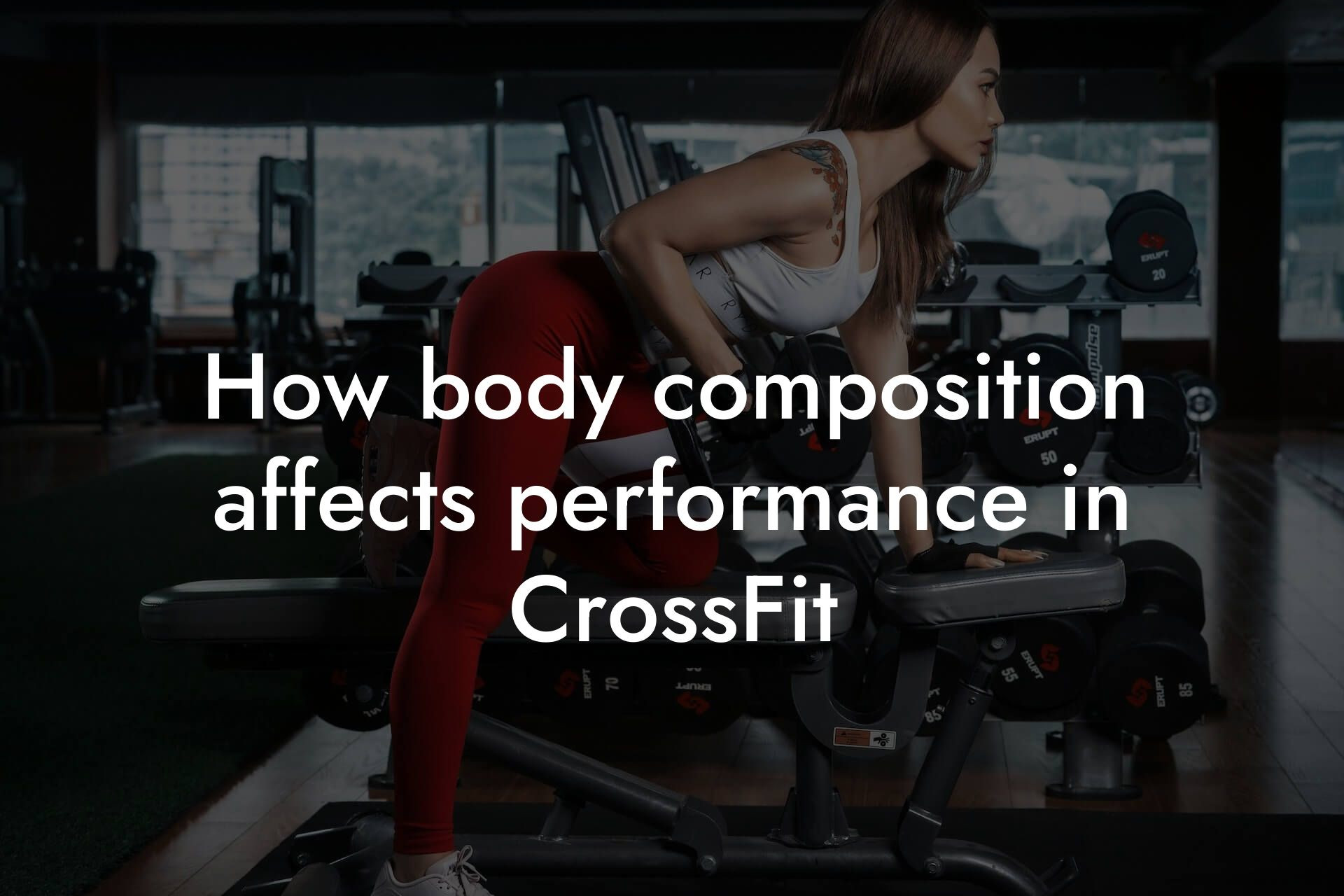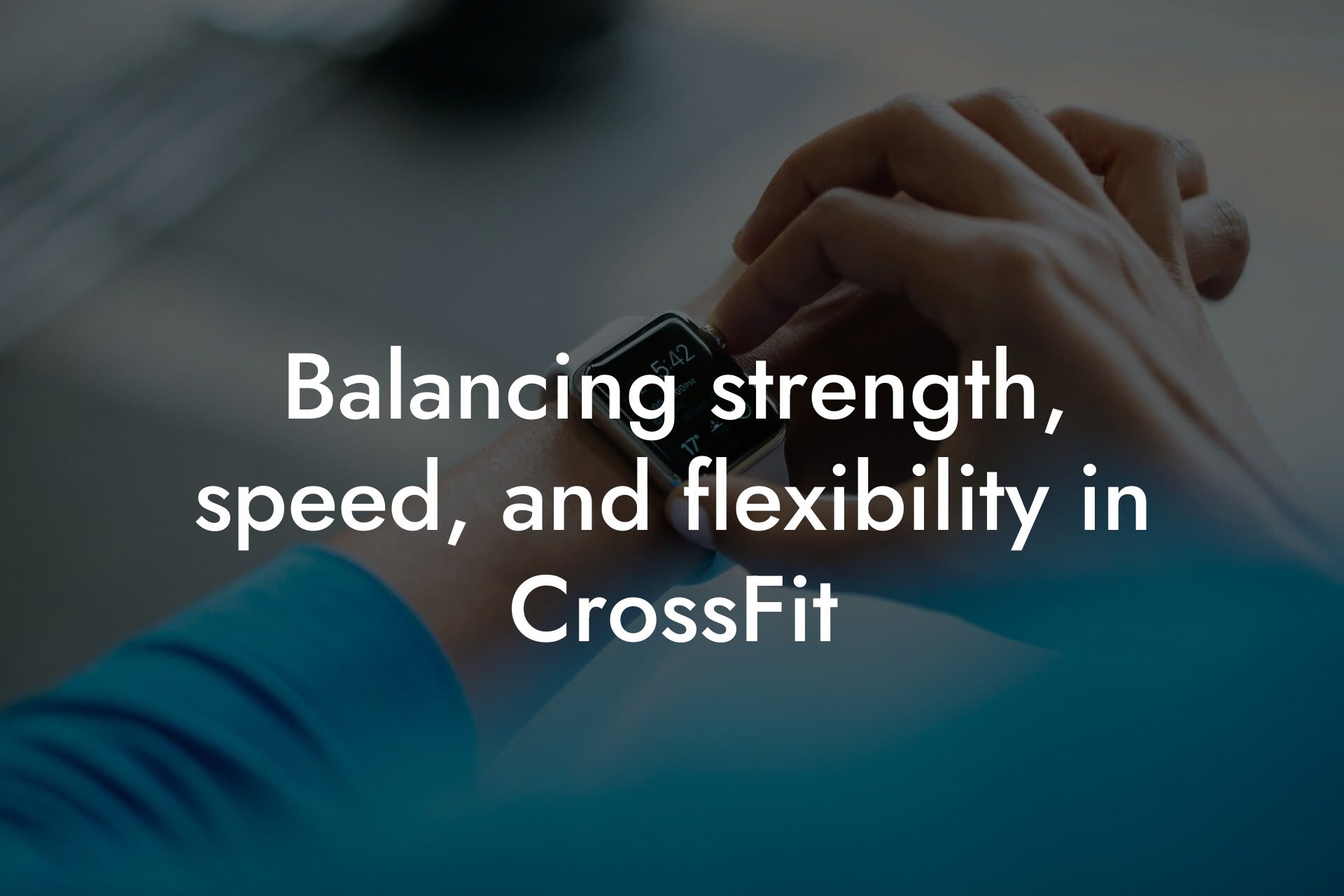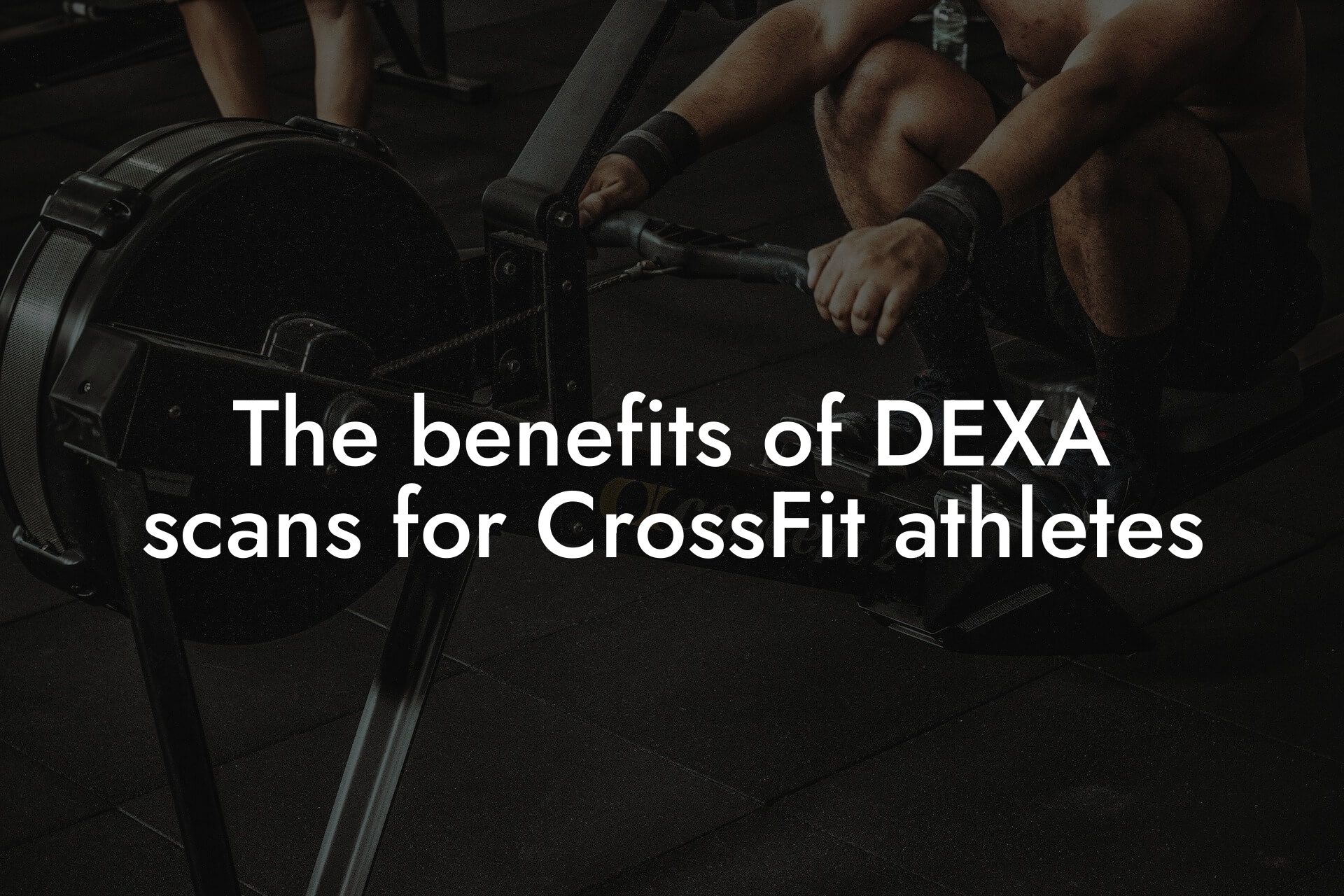As a high-earning professional, you understand the importance of maintaining a healthy and fit physique. CrossFit, a high-intensity fitness program, has become increasingly popular among professionals like yourself. However, with the intense nature of CrossFit comes a higher risk of injury, particularly to the bones. In this article, we'll delve into the world of bone density and injury prevention in CrossFit, providing you with the knowledge you need to optimize your fitness routine and reduce the risk of injury.
Table of Contents
What is Bone Density?
Bone density refers to the measure of how much calcium and other minerals are present in your bones. The higher your bone density, the stronger your bones are. Peak bone density is typically reached in early adulthood, around the age of 30. After that, bone density gradually decreases with age, increasing the risk of osteoporosis and fractures.
Why is Bone Density Important in CrossFit?
CrossFit involves high-impact movements, heavy lifting, and repetitive stress on the joints. This can lead to an increased risk of bone fractures, particularly in the wrists, ankles, and spine. Maintaining optimal bone density is crucial to reduce the risk of injury and ensure long-term participation in CrossFit. Stronger bones can withstand the demands of high-intensity exercise, allowing you to perform at your best while minimizing the risk of injury.
How Does CrossFit Affect Bone Density?
Research suggests that CrossFit can have both positive and negative effects on bone density. On the one hand, the high-impact nature of CrossFit can stimulate bone growth and increase density. On the other hand, repetitive stress and inadequate recovery time can lead to bone loss and decreased density. It's essential to strike a balance between challenging your body and allowing for adequate recovery time to optimize bone density.
Risk Factors for Low Bone Density in CrossFit Athletes
Certain factors can increase the risk of low bone density in CrossFit athletes, including:
- Age: As we age, bone density naturally decreases.
- Gender: Women are more likely to experience bone loss due to hormonal changes.
- Genetics: Family history can play a role in bone density.
- Nutrition: Inadequate calcium and vitamin D intake can contribute to bone loss.
- Training volume and intensity: Insufficient recovery time and high training volumes can lead to bone loss.
- Previous injuries: History of fractures or injuries can increase the risk of future bone damage.
Injury Prevention Strategies for CrossFit Athletes
To reduce the risk of injury and optimize bone density, consider the following strategies:
- Warm up and cool down: Proper warm-ups and cool-downs can reduce the risk of injury and improve bone density.
- Progressive overload: Gradually increase weight and intensity to challenge your bones and stimulate growth.
- Proper form and technique: Focus on proper form and technique to reduce the risk of injury and optimize bone density.
- Adequate recovery time: Allow for adequate recovery time to enable your bones to repair and rebuild.
- Supplementation: Ensure adequate calcium and vitamin D intake through diet or supplementation.
- DEXA scans: Regular DEXA scans can monitor bone density and identify potential issues early on.
The Role of DEXA Scans in Injury Prevention
DEXA (Dual-Energy X-ray Absorptiometry) scans are a non-invasive, pain-free way to measure bone density. By tracking changes in bone density over time, DEXA scans can help identify potential issues before they become major problems. At Tano Performance Group, we offer comprehensive DEXA scans as part of our body assessment package, providing you with a complete picture of your overall health and fitness.
Maintaining optimal bone density is crucial for CrossFit athletes to reduce the risk of injury and ensure long-term participation in the sport. By understanding the importance of bone density, identifying risk factors, and implementing injury prevention strategies, you can optimize your fitness routine and perform at your best. Remember, regular DEXA scans can provide valuable insights into your bone health, helping you stay ahead of the game and achieve your fitness goals.
Frequently Asked Questions
What is bone density and why is it important for CrossFit athletes?
Bone density refers to the measure of how dense and strong your bones are. It's an important aspect of overall health, especially for CrossFit athletes, as it can affect performance and injury risk. Low bone density can increase the risk of osteoporosis, fractures, and other bone-related injuries, which can be devastating for athletes who rely on their physical abilities.
How does CrossFit affect bone density?
Participating in high-impact activities like CrossFit can have both positive and negative effects on bone density. On the one hand, weight-bearing exercises can stimulate bone growth and increase density. On the other hand, repetitive stress and high-impact movements can lead to bone loss and decreased density if proper precautions are not taken.
What are the risks of low bone density for CrossFit athletes?
Low bone density can increase the risk of injuries, such as stress fractures, osteoporosis, and other bone-related problems. This can lead to prolonged recovery periods, decreased performance, and even early retirement from the sport.
How can I improve my bone density through diet?
A diet rich in calcium, vitamin D, and other essential nutrients is crucial for maintaining strong bones. Foods such as dairy products, leafy greens, and fortified cereals can help support bone health. Additionally, avoiding excessive caffeine and alcohol consumption can also help.
What role does exercise play in bone density?
Exercise, especially weight-bearing and resistance training, can help stimulate bone growth and increase density. However, it's essential to incorporate low-impact activities and proper recovery techniques to avoid excessive stress on the bones.
How often should I get my bone density tested?
The frequency of bone density testing depends on various factors, including age, medical history, and athletic activity level. Generally, it's recommended to get tested every 2-3 years, or as advised by a healthcare professional.
What are some common injuries associated with low bone density in CrossFit?
Common injuries associated with low bone density in CrossFit include stress fractures, shin splints, and osteoporosis-related fractures. These injuries can be debilitating and may require extended recovery periods.
Can I still participate in CrossFit if I have low bone density?
Yes, but it's essential to take necessary precautions and work with a qualified coach or healthcare professional to develop a customized training program that takes into account your bone density and injury risk.
How can I modify my CrossFit training to reduce the risk of bone-related injuries?
Modifications can include reducing the intensity and frequency of high-impact exercises, incorporating low-impact activities, and focusing on proper technique and form. Additionally, incorporating exercises that target bone density, such as weight-bearing activities, can also be beneficial.
What are some exercises that can help improve bone density?
Exercises that can help improve bone density include weight-bearing activities like squats, lunges, and deadlifts, as well as resistance training exercises like leg press and calf raises.
Can I use supplements to improve my bone density?
Certain supplements like calcium, vitamin D, and omega-3 fatty acids may be beneficial for bone health. However, it's essential to consult with a healthcare professional before adding any supplements to your regimen.
How does age affect bone density in CrossFit athletes?
As athletes age, bone density naturally decreases, increasing the risk of injuries and osteoporosis. It's essential for older athletes to take proactive steps to maintain bone density and reduce injury risk.
Can I improve my bone density through lifestyle changes?
Yes, lifestyle changes such as getting regular exercise, maintaining a healthy diet, and getting adequate sleep can all contribute to improved bone density.
How does sleep affect bone density?
Adequate sleep is essential for bone health, as it allows the body to repair and rebuild bones. Inadequate sleep can disrupt this process, leading to decreased bone density and increased injury risk.
What role does stress play in bone density?
Chronic stress can negatively impact bone density by increasing the production of cortisol, a hormone that can break down bone tissue. Managing stress through techniques like meditation and yoga can help mitigate this risk.
Can I improve my bone density through yoga and Pilates?
Yes, low-impact activities like yoga and Pilates can help improve bone density by stimulating bone growth and increasing flexibility and balance.
How does body composition affect bone density?
Maintaining a healthy body composition, including a low body fat percentage, can help support bone density. Excess body fat can put additional stress on the bones, increasing the risk of injuries and osteoporosis.
What are some common myths about bone density and CrossFit?
Common myths include the idea that bone density is only a concern for older athletes or that high-impact exercises are the only way to improve bone density. However, bone density is a concern for athletes of all ages, and a well-rounded training program that includes low-impact activities can be beneficial.
How can I work with a coach or trainer to develop a bone density-focused training program?
Work with a qualified coach or trainer to develop a customized training program that takes into account your bone density, injury risk, and fitness goals. They can help you modify exercises, incorporate low-impact activities, and provide guidance on proper technique and form.
What are some resources available for CrossFit athletes looking to improve their bone density?
Resources include working with a qualified coach or trainer, consulting with a healthcare professional, and seeking out online resources and educational materials from reputable organizations like the National Osteoporosis Foundation.
How can I track my progress and monitor my bone density?
Work with a healthcare professional to track your progress through regular bone density tests and monitor your injury risk through regular assessments and feedback from your coach or trainer.
What are some common mistakes CrossFit athletes make when it comes to bone density?
Common mistakes include neglecting to incorporate low-impact activities, ignoring proper technique and form, and failing to prioritize bone density as part of their overall fitness routine.
How can I prioritize bone density as part of my overall fitness routine?
Prioritize bone density by incorporating exercises that target bone density, modifying your training program to reduce injury risk, and seeking out guidance from a qualified coach or trainer.
Here are some related articles you might love...
- How body composition affects performance in CrossFit
- Balancing strength, speed, and flexibility in CrossFit
- The benefits of DEXA scans for CrossFit athletes
- Nutrition tips for sustaining energy during CrossFit workouts
- Recovery techniques for CrossFit athletes after intense WODs
- The role of muscle mass in CrossFit endurance and power
- Reducing body fat for better performance in CrossFit competitions
- Off-season training strategies for CrossFit athletes
- Strength and conditioning programs for CrossFit athletes
Zak Faulkner
Zak Faulkner is a leading authority in the realm of physical health and body composition analysis, with over 15 years of experience helping professionals optimise their fitness and well-being. As one the experts behind Tano Performance Group, Zak has dedicated his career to providing in-depth, science-backed insights that empower clients to elevate their physical performance and overall health.
With extensive knowledge of DEXA technology, Zak specializes in delivering comprehensive body assessments that offer precise data on body fat, muscle mass, bone density, and overall physique. His expertise enables individuals to make informed decisions and achieve their fitness goals with accuracy and confidence. Zak’s approach is rooted in a deep understanding of human physiology, combined with a passion for helping clients unlock their full potential through personalised strategies.
Over the years, Zak has earned a reputation for his commitment to excellence, precision, and client-focused service. His guidance is trusted by top professionals who demand the best when it comes to their health. Whether advising on fitness programs, nutritional strategies, or long-term wellness plans, Zak Faulkner’s insights are a valuable resource for anyone serious about taking their health and fitness to the next level.
At Tano Performance Group, Zak continues to lead our Content Team revolutionising how professionals approach their physical health, offering unparalleled expertise that drives real results.




